Riverside hot spring resort steeped in rich history



Riverside hot spring resort steeped in rich history

Nagaragawa Onsen (Hot Spring) is located along the Nagara River that is famous for cormorant fishing known as ukai.
Its copper spring water has a very high iron content which feels smooth on the skin.
The River glistens with a reflection of the sky and the greenery on Mt. Kinka creates a sharp contrast with the skyline.
Gifu Castle rising atop the mountain overlooks the traditional townscape where local people are living vibrantly.
Leave the busy urban life and let the slow-flow of time cradle your heart .
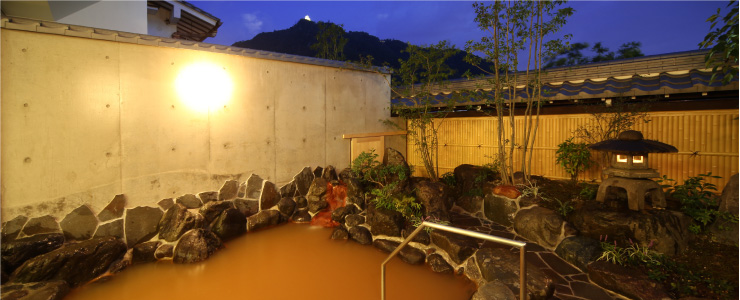
Located along the Nagara River, Nagaragawa Onsen consists of 7 hotels and ryokans.
Its spring water is rich in iron content and colorless but it gradually turns to a reddish-brown, opaque spring when exposed to the air.
It has been designated for 5 years in a row as one of "Japan's top 100 hot spring areas" sponsored by Kankokeizai News Corporation.
Some hotels offer one-day hot spring and free hand/foot bath.
【Spring Quality】
Simple iron cold mineral spring (neutral hypotonic cold mineral spring)
【Benefits】
Neuralgia, muscle pain, rheumatism, frozen shoulders, sports paralysis, stiff joints, bruises, sprains, chronic gastrointestinal disorders, hemorrhoids, oversensitivity to cold, convalescence from illness, convalescence from fatigue, health improvement
※"Nagaragawa Onsen" has been a registered "Regional Organization Trademark" since October 17th, 2008.
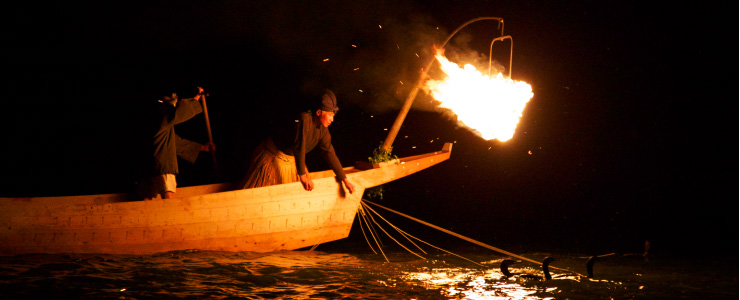
Nagaragawa Onsen is located in Gifu City in the Mino region with 4 hotels and ryokans standing on the north side of the river and 3 on the south side.
Mino signifies richness in beauty. Boasting its history of 1300 years, cormorant fishing known as ukai is a signature feature for this area.
The oldest historical record for ukai can date back to 702, which indicates that it had been already practiced before the Nara Period.
Ukai was then patronized by authorities of the time such as Oda Nobunaga and the Tokugawa Shogunate. A record also shows that Matsuo Basho, a great haiku poet, observed it as well.
The beauty of ukai, characterized by the black shadow of the mountain looming in the deep blue darkness of the night, the subtle white riverside pebbles, and the red fishing fire lanterns lighting up the river surface, reminds us of time flowing slowly and seamlessly since time immemorial. Many historical figures must have been enchanted by these spectacular views.
(→Refer to "Nagaragawa Ukai" for detail)
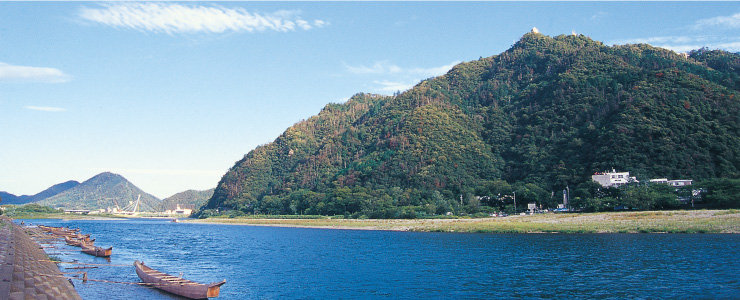
There were many boats navigating on the river in order to transport wood, paper, and marine products as well as those for catching freshwater fish.
This particular area used to be called "Nakagawara," forming an alluvial fan. However, it was easy to cross the river around that area as the dry riverbed didn't expand too widely due to Mt. Kinka.
This resulted in some river docks established and many boathouses operating in the area. Some ryokans in the Nagaragawa Onsen originate from these boathouses.
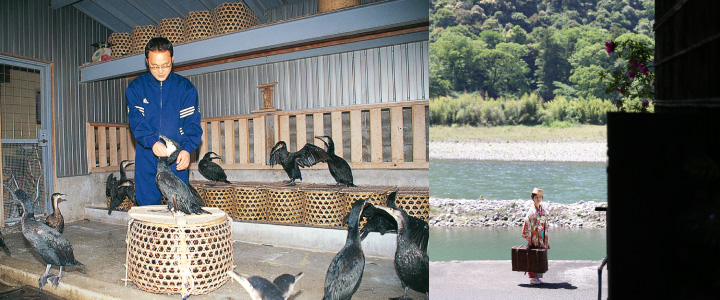
The north side of the Nagara River has originally developed as a town for cormorant fishing masters and boatmen, and numerous aisles leading to the river from residential areas are still in use today.
When ukai viewing boats were not in service, rich people would charter privately-owned boats from nearby residents to enjoy ukai.
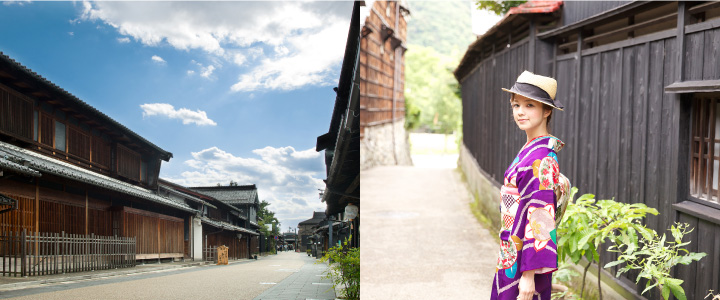
Meanwhile, the south side of the river was home to a river port office with many lumber and paper wholesalers standing side by side.
Many fancy former wholesaler buildings can still be found in today's townscape of old houses with lattice doors that is generally referred to as "Kawara-machi." Gifu is still the trading center for high-class, precious wood of exquisite taste.
Shops dealing in such wood today in the Kawara-machi district brings the atmosphere of the time back then.
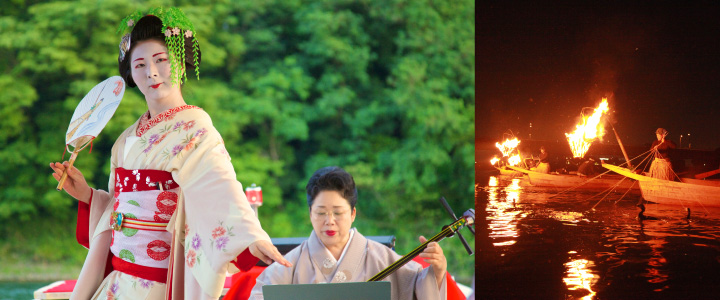
During the Meiji Period, railroads extended from Tokyo to Osaka but it took more than 10 hours to travel.
Therefore, politicians and millionaires would get off their trains at Gifu for a break and spend the night there.
Famous for ukai and its entertainment districts, Gifu was more entertaining at night than other surrounding cities.
Especially, the beauty of ukai spread by word of mouth through dignitaries of the Meiji government.
Today, Visitors can also enjoy "funa-asobi (special traditional entertainment service on the boat)" with geiko (professional female entertainer) and maiko (apprentice geiko) on an ukai viewing boat.
They are committed to persistently improving and sophisticating their traditional performance art unique to Gifu.
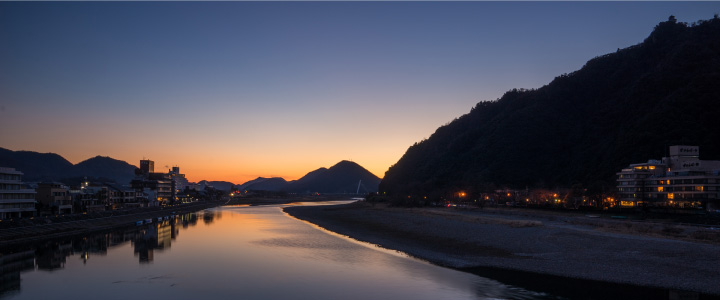
During the mid-60s to the mid-70s, hot springs were created in the area for overnight guests to enjoy.
However, this area was not originally developed as a hot spring resort, making it possible to maintain the townscape that has been nurtured together with the river and cherished by locals.
Not fully developed as a tourist sight, Nagaragawa Onsen still retains the traditional pace of life revolving around the river.
Feel this "stream" of time from its townscape and surrounding nature.